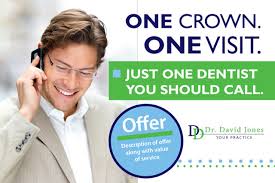Dental postcards are a great tool to increase patient activations. But what I have found is practices fail to use postcards in the correct manner. In this blog I will discuss what elements make an effective postcard and the power of dental postcards if used correctly.
 I believe to make your dental postcards more effective you first send a traditional letter to formally introduce you and your practice. This professional touch establishes a good first impression and makes the following postcards more credible and more likely to be read.
I believe to make your dental postcards more effective you first send a traditional letter to formally introduce you and your practice. This professional touch establishes a good first impression and makes the following postcards more credible and more likely to be read.
Be sure to prominently display your logo or any recognizable visual that will also be used on subsequent dental postcards. The reader should instantly connect any following mailings with the letter.
Several weeks after you have mailed your letter you can send your first dental postcard. I like to use a large card format to standout, 5 ½ x 8 ½ does the trick. You will want to take advantage or bulk mailing rates .25 to .30 cents for 200 or more cards.
As with all ads, a good postcard starts with a headline that will grab the prospective patient. It needs to speak to the reader of the postcard and get them engaged to read more. The best headlines resonate with your ideal patient. A few examples are: “We cater to the busy professional - ask about our “In and out” cleaning program”; or “Thinking about moving dentist?” Or, “Ask about our family appointment plan.”
The message is critical to the success of the card. It should be single focused so the patient prospect can quickly understand what you are trying to get across. So many practices make the critical error of trying to cram every service they provide on to the card or they fill it full of discount coupons that are confusing and hard to read
A single message with lots of white space, a few supporting copy points, a large graphic image, contact information and a call-to-action are all you need to get people interested. It is best to use a headline that are 7 words or less and fits on to one line. The largest type on the page is usually considered the headline and is the first item read. Avoid using all caps or caps on every word to make the header standout. The human eye is not use to reading text like this and it actually makes the copy harder to read.
Be careful not to make the practice name or the dentist name to large. They will search for you once they are engaged and interested in your offer. The name should be on both sides of the dental postcard. On one side it should also include the logo, address, phone number, email, web address, hours and finance Information.
If possible make the graphic image 30% to 50% of the size of the dental postcard. The picture should be clear and related to the message in the headline and copy points. Try to avoid putting copy on top of the image. It makes the copy hard to read and the image less effective.
Use three maybe 5 bullet points or copy to communicate your benefits. These points should discuss “What is in it for them”, not why your practice is “the greatest in the world”, no one believes it and your ad will be dismissed.
I like to send the reader back to the website to get more information. Once they are interested, the website can tell a much better story and provide much more information. A great call-to-action should involve something your prospective patients are interested in getting more information about, such as, “101 ways to smile more often”, “5 things you absolutely must know before starting a whitening program” or “How to save a broken tooth before you get to the dentist”.
The key to success with any postcard you run is to hit the same people 5 to 7 times. The card doesn’t even have to change its message. Far too often a practice runs 1 or 2 dental postcards and gives up when it doesn’t bring in new patients. The power behind multiple mailings is to build awareness and become “top of mind” so when they are ready to call or move, they think of you.
To market your practice better, download our 25 page whitepaper “7 steps to dental practice marketing success”:




